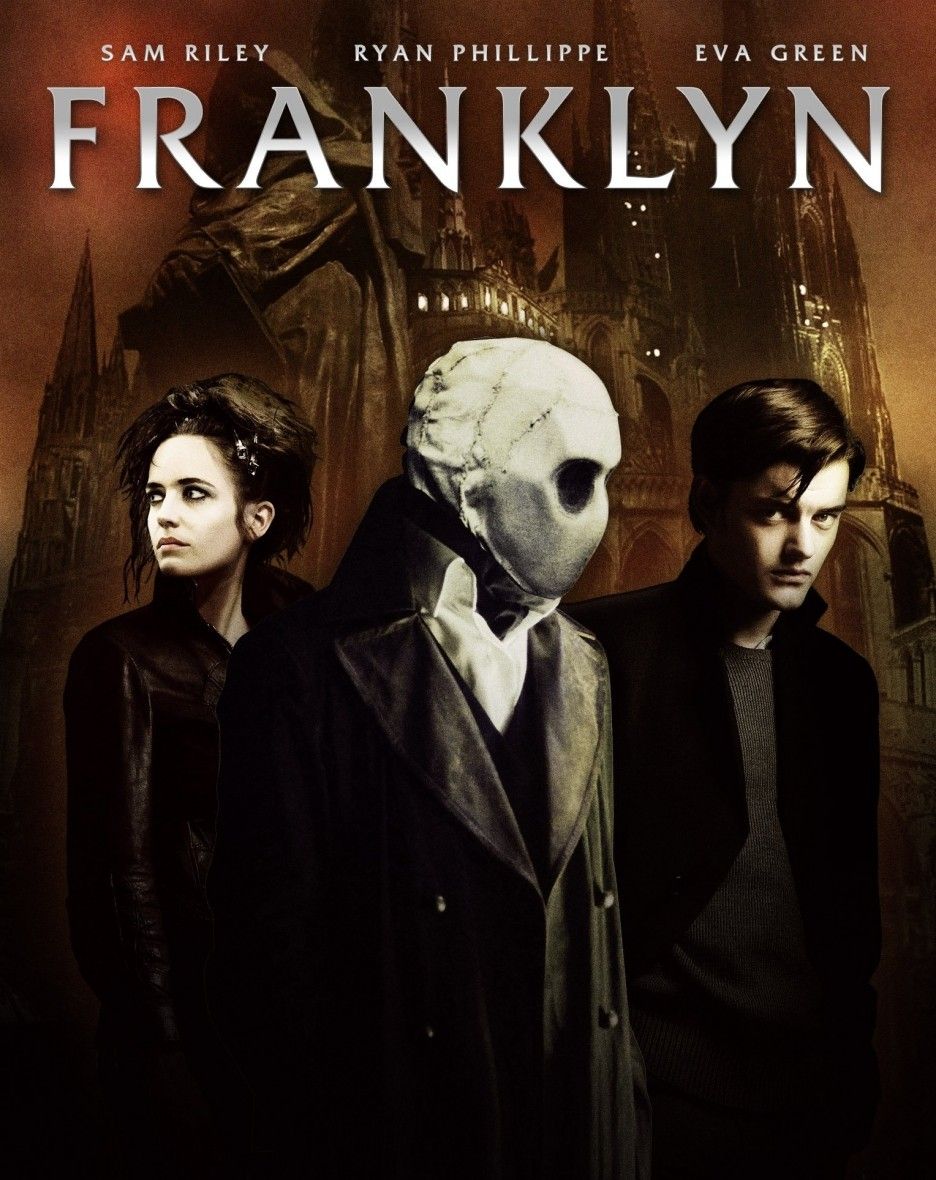According to IMDb, Franklyn was originally set to star Ewan McGregor, Paul Bettany and John Hurt, along with still-starring Eva Green, until McGregor broke his leg in a motorcycling accident and schedules were disrupted. I think that the resulting film would have changed response to it from ‘Hmm, interesting’ to ‘What were they doing in this oddity?’
The posters for the film do it a disservice – the film is not about alternate/sci-fi/strange future cities: it is only one strand in four main stories that ultimately connect (for which one should be grateful – it would have been very annoying if there had been no link to the four characters). The majority of the film is set in a modern day and very recognisable London (especially to me; I had to stop myself from shouting, ‘I’ve been there’ at the scene set on Hanway Street in central London), as it follows Emelia (Green), a budding artist working on strange projects; Milo (Sam Riley), a man who has been jilted at the rehearsal dinner; and Peter (Bernard Hill), a church warden looking for his missing son. The other story is of Jonathan Preest (Ryan Phillipe) in Meanwhile City, a futuristic city where it is the law for citizens to profess a faith of some sort, but Preest is an atheist who performs acts of vigilantism while masked.
For the first half of the film, we are introduced to these characters and drip-fed small pieces of information about them – there is no explanation or attempt to expand on their lives beyond their part in the narrative. The storytelling is precise and unfussy, with the visual flourishes being kept for Meanwhile City, which is a bleak yet fantastical vision of a nightmarish city run by religious bureaucracy. Emilia, an artist with issues (obviously), creates art with her camcorder, recording her planned and elaborate suicide attempts (which she knows won’t kill her because she phones the ambulance before the act). Milo moons about, talking with his best man about what’s gone wrong, until he starts seeing someone he thinks is an old flame from his youth. Peter visits places his son used to visit to talk to people who knew him and may be able to find him. Preest is captured by the Ministry but is released to go on a mission for them, to kill The Individual, the man responsible for the death of the little girl who was his last client. It is not until the second half that we see clues as to how these separate strands are interlinked and what they mean.
The film is written and directed by Gerald McMorrow in his feature-length debut, and he has a very strong idea of what he wants and how to relate that cinematically. However, the narrative isn’t sufficiently gripping to enthral the viewer, especially when it deliberately obfuscates to create an atmosphere. The actors all do a good job, playing it very straight, but the characters do not evoke much sympathy, a factor that blocks engaging with the story. When it all comes together at the end, the denouement doesn’t resonate or make the build up worthwhile (nor explain the significance of ‘Franklyn’, unless I’m being very dense). The audience I saw the film with left the cinema quietly and quickly, not showing any indication of a connection to the previous 90 minutes.
If there is a theme to the film that might help to prescribe a reason for it to exist, it would be the perceptions of realities and how we create/interact with them, although this doesn’t really apply to the Peter section of the film. However, the reality of the situation is that the film never rises above the level of ‘hmm, interesting’, and the potential of what McMorrow might do in the future.
Rating: DA




